This tried and true Kitchenaid Pasta Recipe uses simple ingredients to create a silky smooth fresh pasta dough. Shape the dough by hand or using the Kitchenaid pasta maker attachment and enjoy delicious homemade pasta at home.
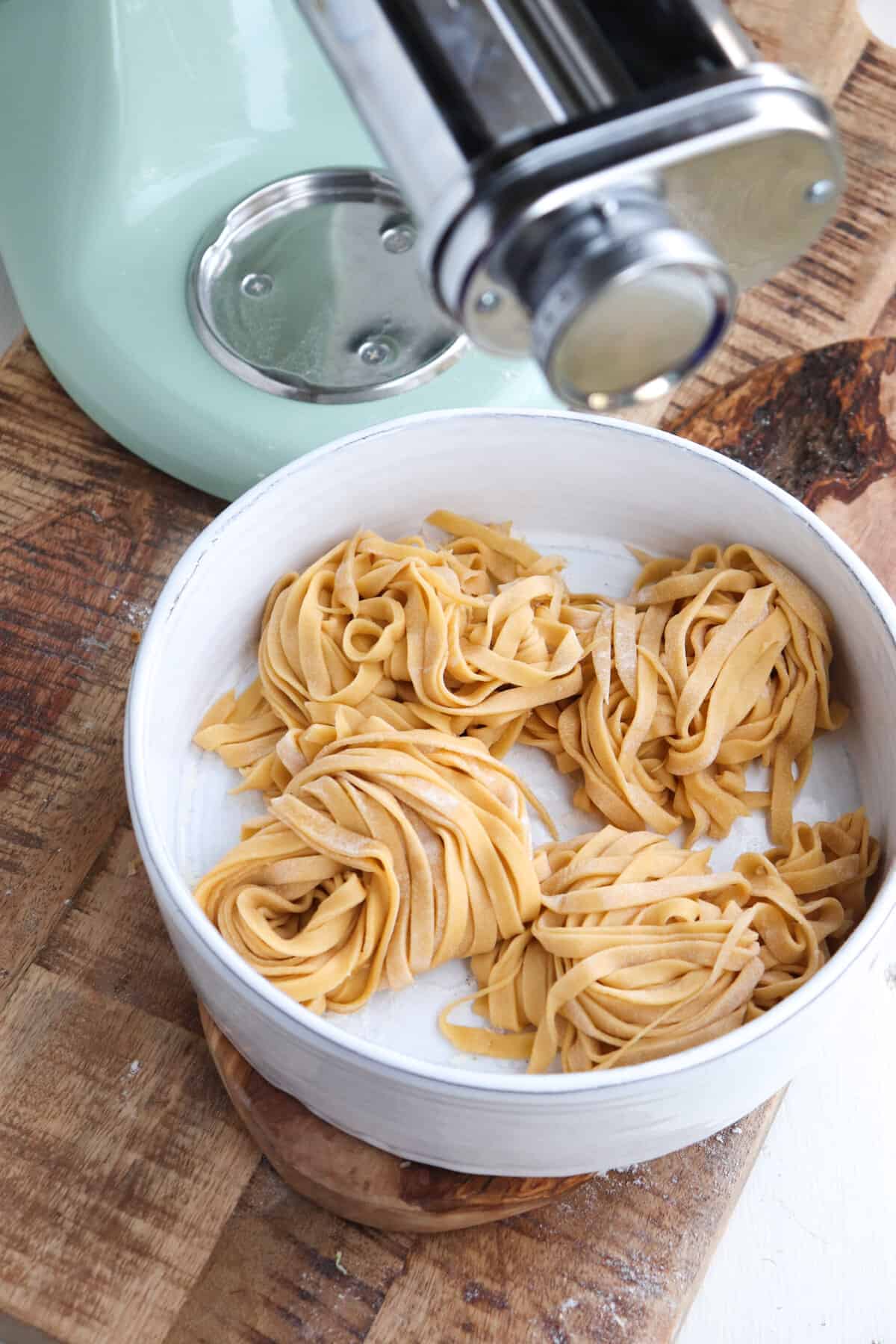
Fresh homemade pasta is so simple to make, it doesn’t have to be intimidating. Whether it's your first time making pasta or you're an expert, when you want to take your dish to a new level, fresh pasta is the way to go!
This recipe uses the Kitchenaid Stand Mixer as well as the Kitchenaid pasta attachment. I find that that these tools make the pasta making process that much easier. If you don't have the attachment (or a stand mixer) this pasta dough can be made by hand. Simply mix the dough on the counter or in a bowl, use a rolling pin to roll the dough into thin sheets, and then a sharp knife to cut the dough into strands.
Jump to:
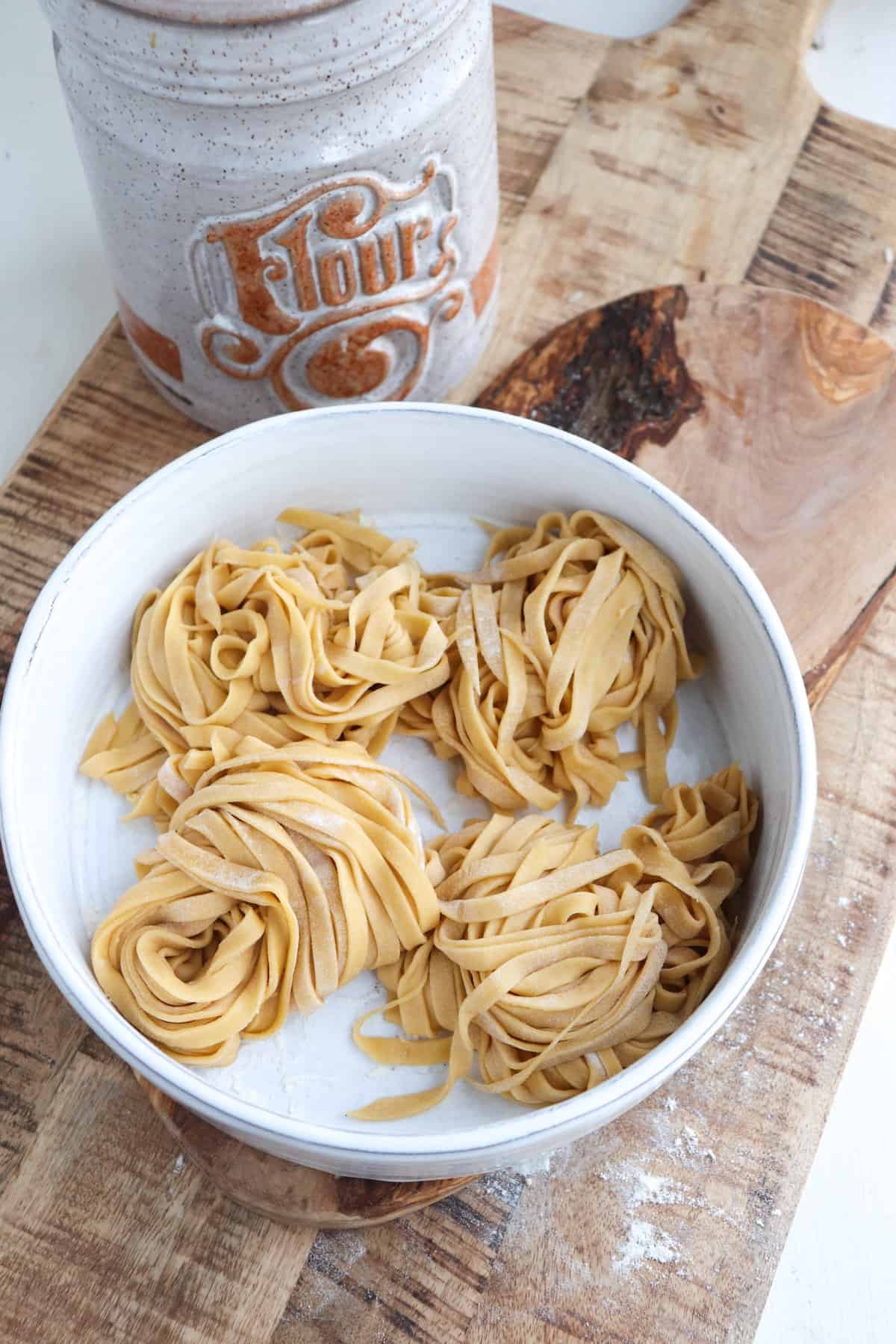
The pasta maker attachment set seen here has 3 rollers that it comes with, versatile pasta roller attachment, classic (spaghetti), and hearty (fettuccine). The versatile pasta roller makes thin sheets so easily, it's such a helpful tool. Just make sure to flour the dough well before feeding through the roller, so that it doesn't stick.
I love using this pasta dough different ways and cut into a wide variety of shapes! If left thicker and cut into smaller noodles by hand, it makes an awesome addition to chicken noodle soup. You can learn all about italian pasta and its various shapes here.
A favorite- pappardelle. Pappardelle comes from the verb “pappare” meaning “to gobble up,” and that is certainly what you will want to do with a plate of these noodles! Traditionally, this style of pasta is a wide, long, and flat noodle, like big, beautiful strands of ribbon!
Ingredients in homemade pasta recipe

- Flour: All-purpose, semolina, or Type 00 flour. Traditionally, pasta is made with semolina flour. This is a coarse grain, high gluten flour that helps the pasta to hold its’ shape when cooked. Although this may be traditional, I have found that regular all purpose flour works just fine. Especially for beginners, this recipe literally requires three ingredients--flour, eggs, and olive oil. These are pantry staples that most people have on hand.
- olive oil: Use extra virgin olive oil for the best taste.
- salt: This helps flavor the pasta dough from the inside out. Just a bit is all you need.
- water: As you mix your pasta dough, you may find that you need more moisture added to help it come together. Use a small spoon to add a little at a time until it forms into a tight ball.
How to make homemade pasta in the Kitchenaid
Into the bowl of your stand mixer, add flour. Create a dip in the flour and crack in your three eggs and add oil.
With a fork, whisk together eggs and oil. Then use the dough hook on low speed to begin forming the dough. Do this until a rough ball of dough has been created. It will be tacky and textured to start-- don't worry, it just needs to be kneaded. You may need to scrape down the sides of the bowl to make sure it is all fully incorporated.

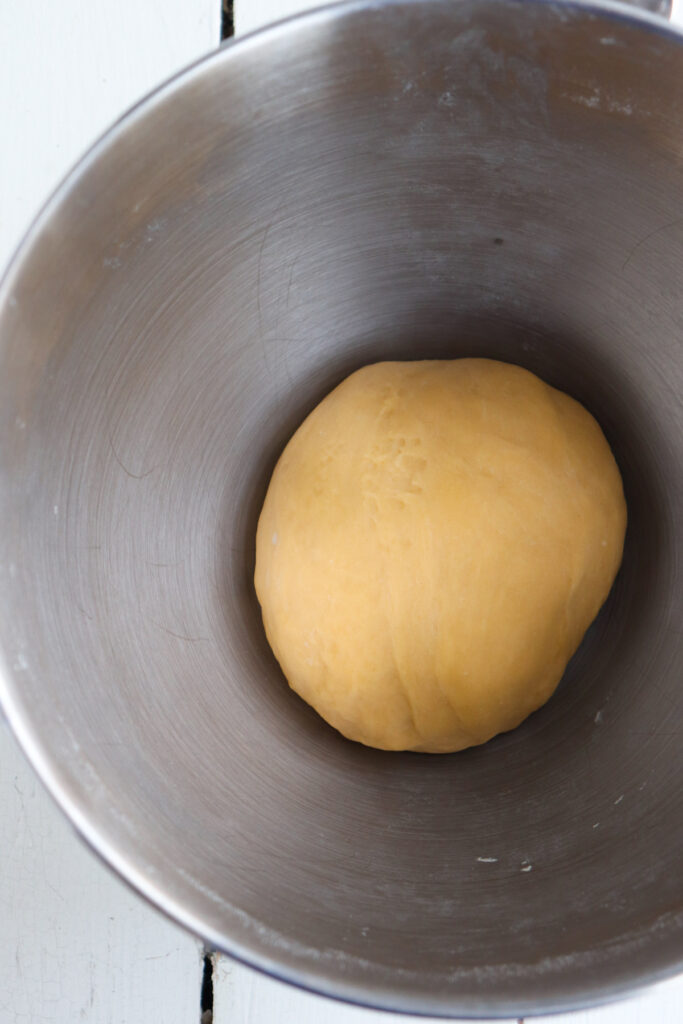
If the dough is too crumbly, add water slowly, a tablespoon at a time.
Continue to use dough hook to knead on low speed for the 8-10 minutes.
Cover dough in plastic wrap and let rest for 30 minutes.
Once the dough has rested, cut into 4 even pieces and flatten slightly with hand.
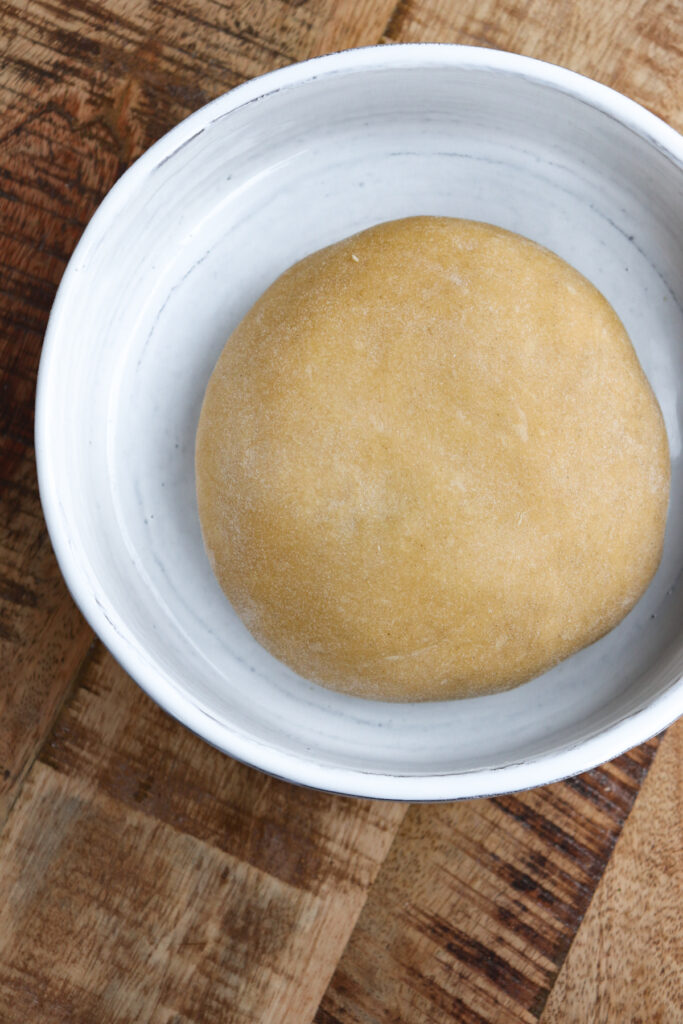
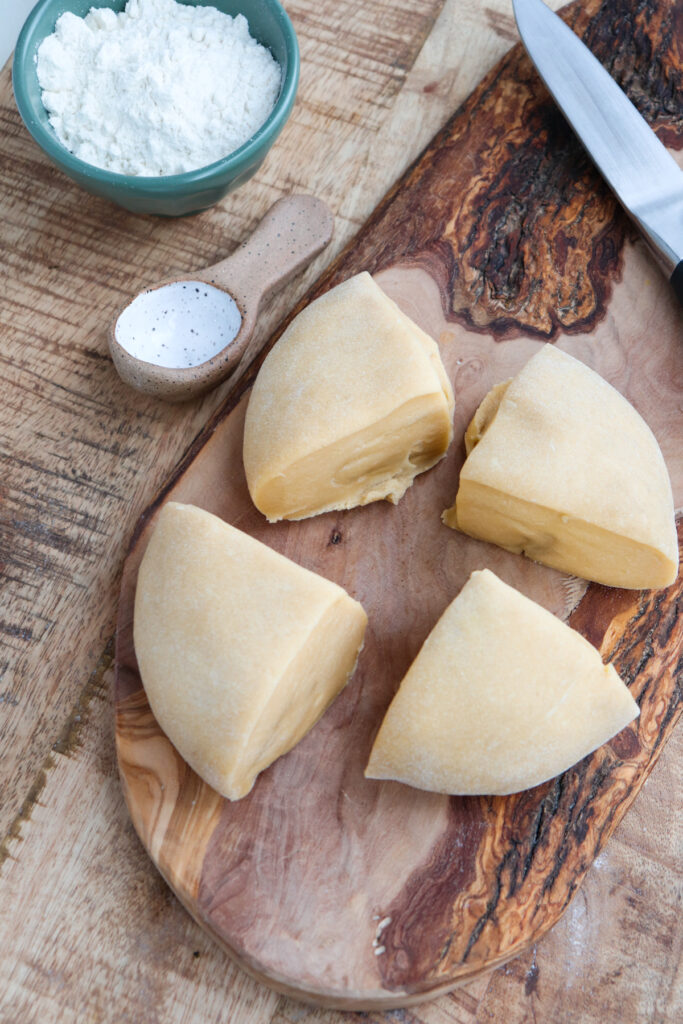

Flour each piece well and run through the pasta sheet roller, starting with the thickest setting and going until it is your desired thinness. Once the long pasta sheets are formed you can use for lasagna or cut pasta into pappardelle, or you can run the sheet through the hearty or classic rollers to make fettuccine or spaghetti noodles.

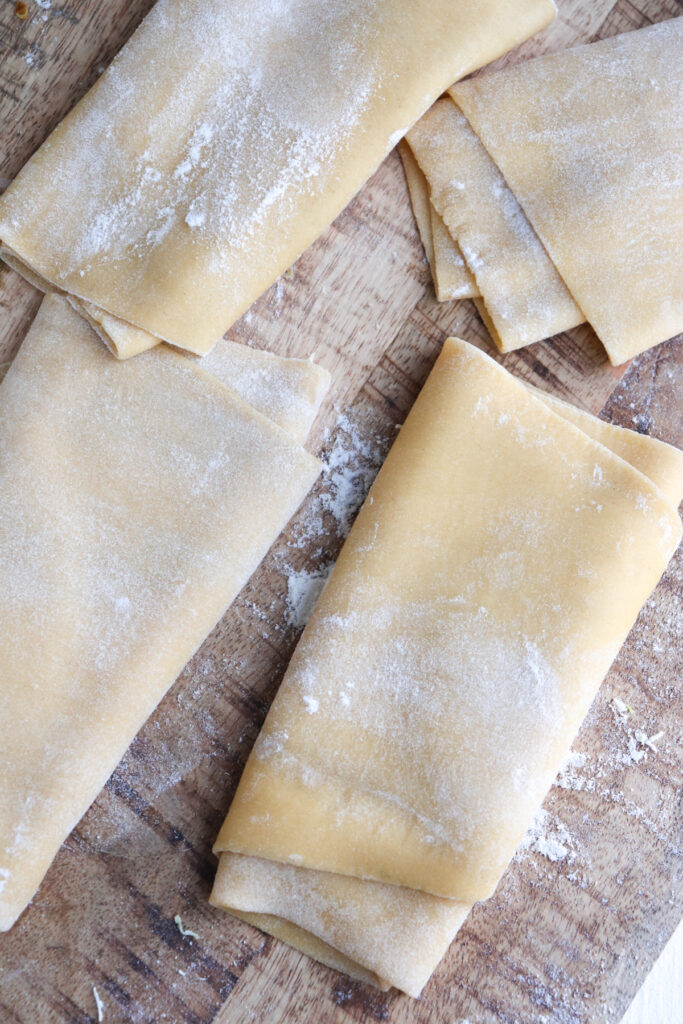
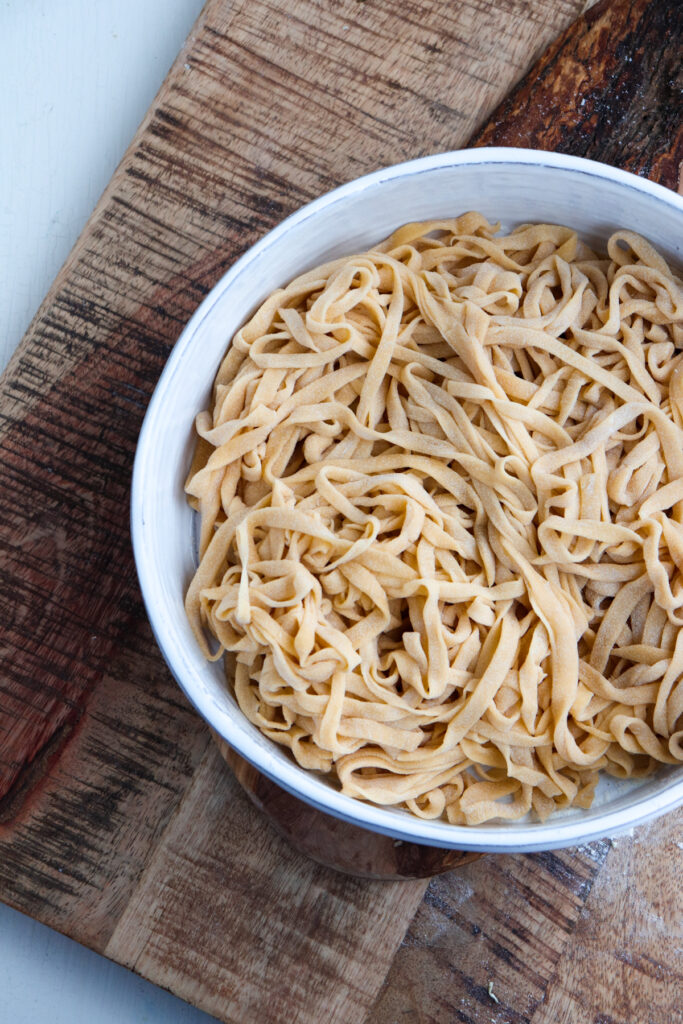
After each set of noodles is run through the pasta attachments, flour well and set onto a baking sheet or pasta drying rack to avoid sticking while you roll out the remaining dough.
Cook pasta in salted, boiling water for 2-3 minutes.
How long to cook fresh pasta
Be aware that the cooking time for fresh pasta will be significantly less than that of dried pasta, 2-3 minutes is all you will need. Overcooking fresh pasta will turn it into a gooey mess.
You will want to make sure your water is at a roaring boil before you add in the noodles to make sure it cooks quickly and evenly. I like to stir it a bit throughout the cooking process to help prevent sticking.
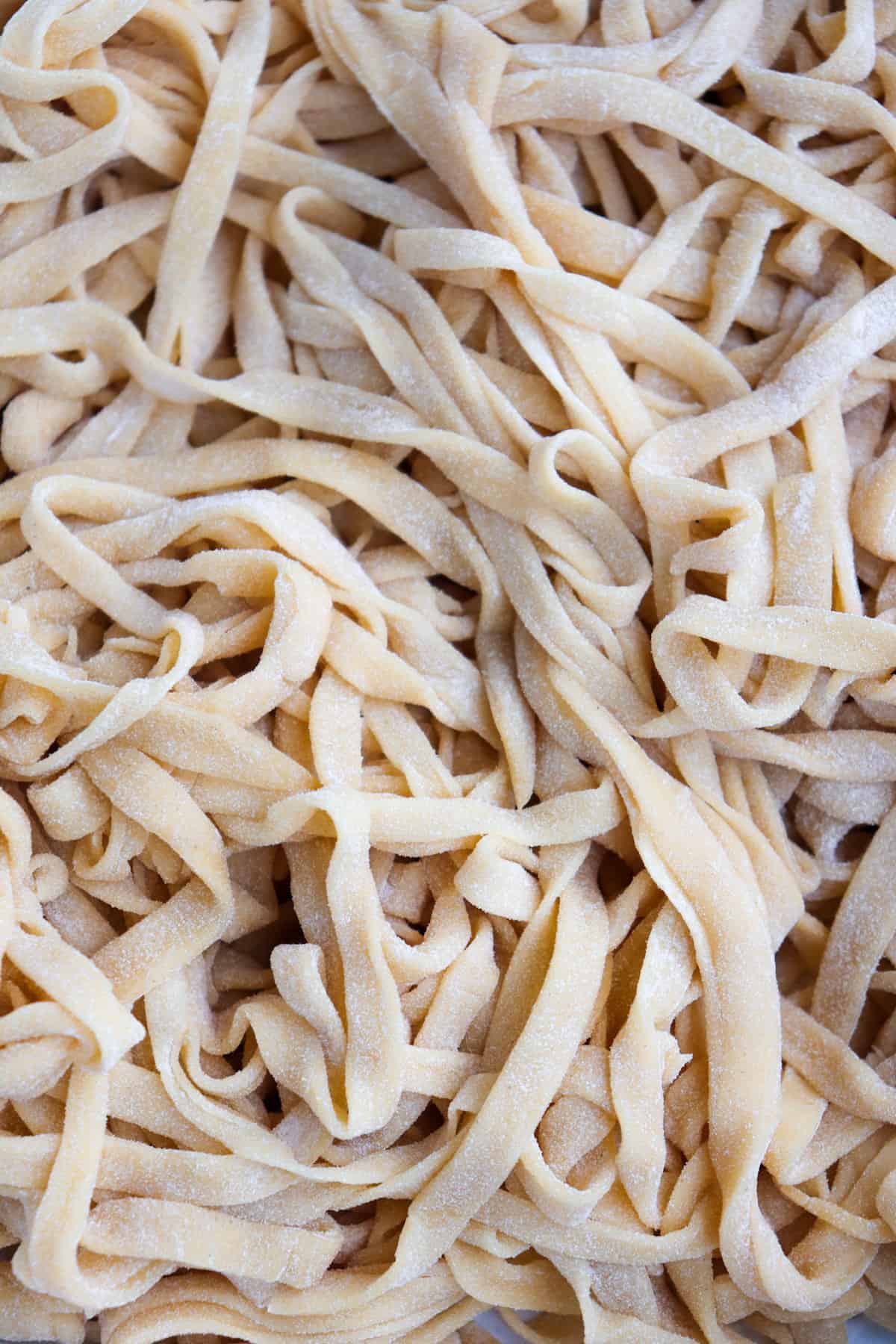
Ratios for Kitchenaid pasta recipe
There are a lot of different ratios you will find on the internet for how to make fresh pasta, but I feel like this one works very well. After kneading the dough in the Kitchenaid for 10 minutes, it was the perfect texture. When I ran it through the pasta machine it rolled beautifully. Even after it was cut it didn’t stick to itself!
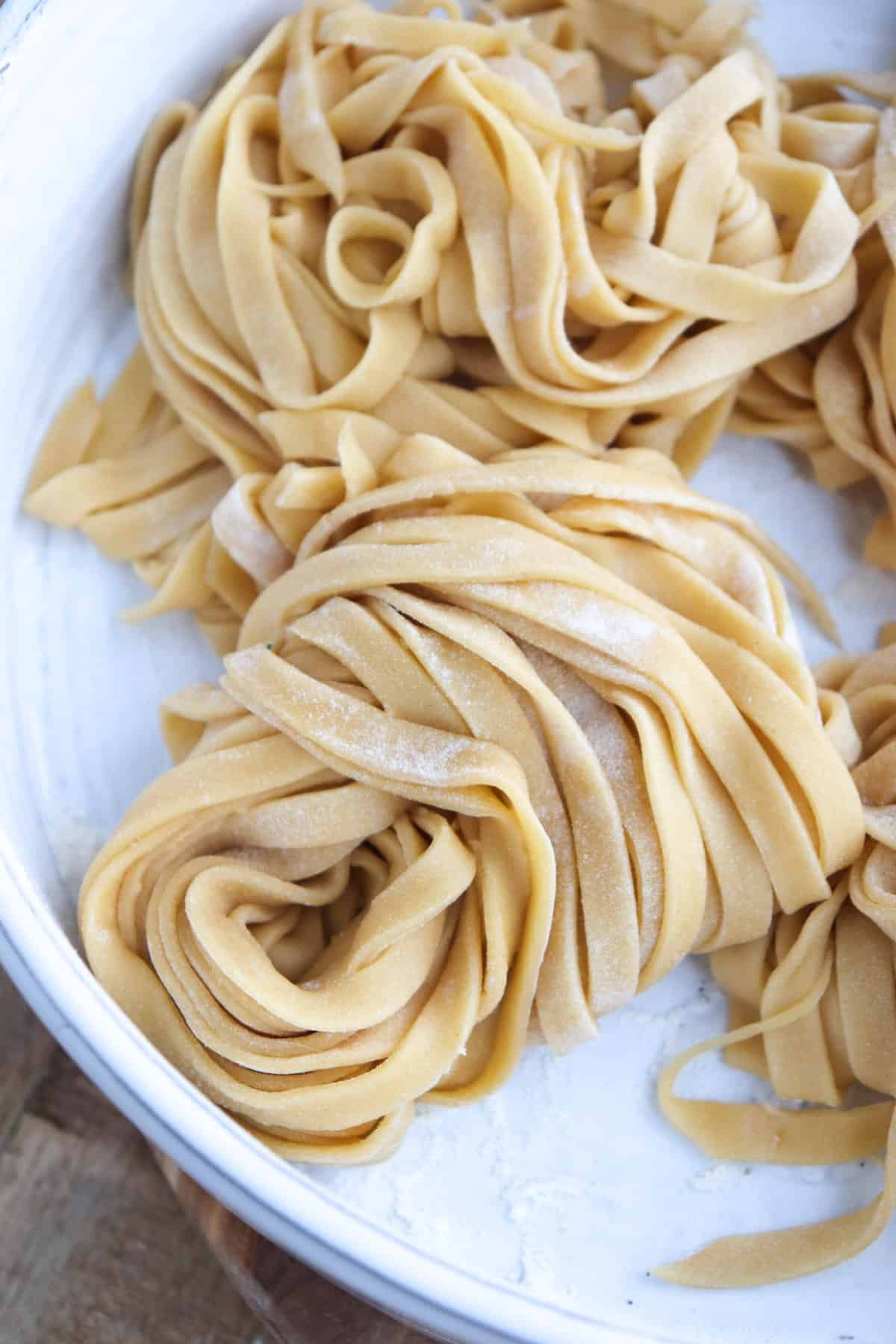
What to serve with fresh pasta
Now that you have your fresh pasta made with a little help from the Kitchenaid stand mixer, time to serve it up with your favorite dishes! Classic spaghetti and meatballs, pappardelle with beef ragu, or tossed with a bit of butter and cheese- you can't go wrong. Here are some favorites to try.
- chicken parmesan with Rao's sauce
- Giant Stuffed Meatballs with Mozzarella
- Creamy Tuscan Shrimp
- Giada Chicken Piccata
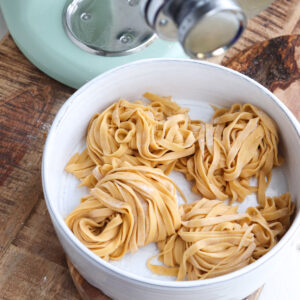
Kitchenaid Pasta Recipe
Ingredients
- 2 cups flour plus more for sprinkling
- 3 eggs
- 1 tbsp. olive oil
- water as needed
Instructions
- Into the bowl of your stand mixer, add flour. Create a dip in the flour and crack in your three eggs and add oil.
- With a fork, whisk together eggs and oil. Then use the dough hook on low speed to begin forming the dough. Do this until a rough ball of dough has been created. It will be tacky and textured to start-- don't worry, it just needs to be kneaded. You may need to scrape down the sides of the bowl to make sure it is all fully incorporated.
- If the dough is too crumbly, add water slowly, a tablespoon at a time.
- Continue to use dough hook to knead on low speed for the 8-10 minutes.
- Cover dough in plastic wrap and let rest for 30 minutes.
- Once the dough has rested, cut into 4 even pieces and flatten slightly with hand.
- Flour each piece well and run through the pasta sheet roller, starting with the thickest setting and going until it is your desired thinness. Once the long pasta sheets are formed you can use for lasagna or cut pasta into pappardelle, or you can run the sheet through the hearty or classic rollers to make fettuccine or spaghetti noodles.
- After each set of noodles is run through the pasta attachments, flour well and set onto a baking sheet or pasta drying rack to avoid sticking while you roll out the remaining dough.
- Cook pasta in salted, boiling water for 2-3 minutes.


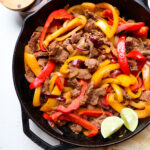


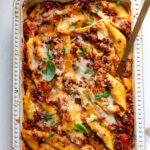



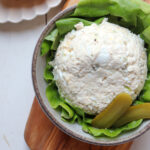
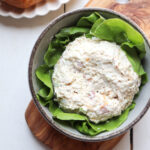
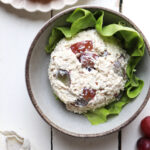
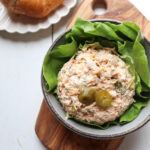
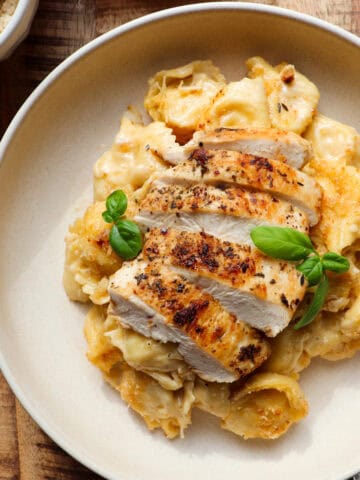
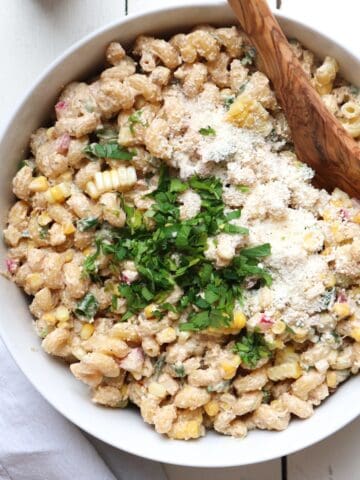
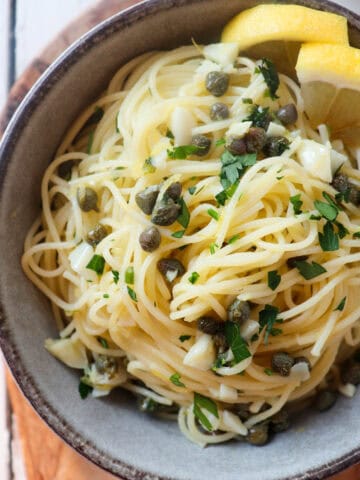
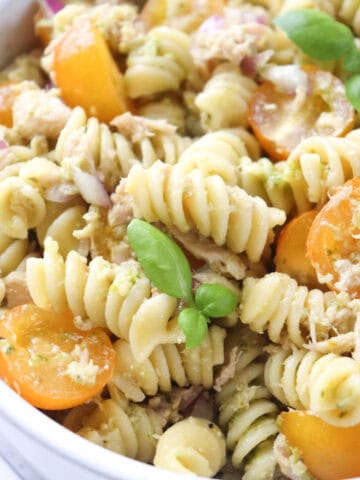
Mary Belter
Sounds like a yummy easy pasta,can’t wait to try it.
Sarah
Made tonight, recipe works great.